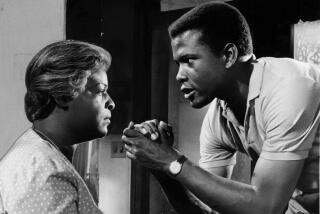Are famous people more likely to die at 27, or does dying at 27 make them more famous?

- Share via
Their deaths have fueled the notion that 27 is a lethal age for musicians and other notable artists.
Amy Winehouse, the iconoclastic singer-songwriter, was that age when she died of alcohol poisoning in 2011. So was grunge rocker Kurt Cobain when he died of suicide in 1994 and rock ‘n’ roll queen Janis Joplin when she succumbed to a heroin overdose in 1970.
And they’ve got plenty of illustrious, tragic company — the most recent example being actor Chance Perdomo, who died in a motorcycle crash in March.
For decades, the apparent phenomenon of the so-called 27 Club has captured the public’s morbid fascination. Time and again, however, scientists have crunched the numbers and determined that the 27 Club has more basis in myth than in math.
Taylor Swift’s new ‘The Tortured Poets Department’ album draws inspiration from her own breakups. What attracts us to songs about failed relationships?
A seminal study in the medical journal BMJ, for instance, found that the risk of death for famous musicians in their 20s and 30s was indeed up to three times higher than for members of the general public. However, in their analysis of 522 musical artists, the mortality rate for 27-year-olds — 0.57 deaths for every 100 years of life lived by those in the study — was nearly identical to the mortality rate for 25-year-olds (0.56 deaths per 100 musician-years) and for 32-year-olds (0.54 deaths per 100 musician-years).
Another study in an academic journal called Medical Problems of Performing Artists that examined the deaths of 13,195 popular musicians from an array of genres also concluded that their life expectancy was lower than for the population at large. But there was nothing particularly perilous about age 27, the authors found — in fact, the riskiest years came before musicians turned 25.
Yet the legend of the 27 Club continues to grow. Pages devoted to 27 Club members exist in 51 languages on Wikipedia, and the one in English contains 85 entries.
Now, researchers have taken a fresh look at the club to see what its persistence says about us as a society. Their conclusion: The 27 Club may be a myth, but it does carry real cultural consequences.
Zackary Okun Dunivin, a computational methodologist and cultural sociologist, said he dug into the data for one reason: He didn’t think the legitimacy of the 27 Club should be dismissed out of hand simply because it lacked statistical support.
“Scientists have treated it unfairly in the past,” said Dunivin, a postdoctoral scholar at UC Davis. “Just because a myth has no basis in fact doesn’t mean it isn’t important.”
On the contrary, he said, “myths and stories are collective sense-making. It’s how we understand the world and helps us to do the things that make life worthwhile, feeling wonder, mystery, pain, excitement, and sharing that with others.”
Dunivin and his colleague Patrick Kaminski of the University of Stuttgart in Germany re-examined the phenomenon using 14,517 dead pop musicians with pages on Wikipedia. As a group, these musicians were more apt to die at younger ages than hundreds of thousands of other notable deceased people who merited space on Wikipedia, the pair found.
Like other researchers, Dunivin and Kaminski confirmed that there was nothing unusually hazardous about being 27, according to their study published Monday in the Proceedings of the National Academy of Sciences.
But that was just the beginning.
Dunivin wanted to establish that the 27 Club was real because it had a measurable effect. He and Kaminski focused on people in their sample who died between the ages of 25 and 40 and plotted them on a graph according to their “notability” (as measured by visits to their Wikipedia pages) and how old they were when they passed away.
In this analysis, the people who died at 27 stood out from their older and younger counterparts.
The 27 Club members who ranked in the top 1% of notability were 170% more notable than they would have been if they had died at a different age, Dunivin said. Likewise, other members who ranked in the top 10% of notability became 35% more notable by dying at age 27, he said.
In other words, “the more famous you are, the more you benefit from the 27 Club effect,” said Dunivin, whose favorite member of the 27 Club is artist Jean-Michel Basquiat.
A study of interactions between military doctors and patients of various ranks confirms that people with higher status get resources at other people’s expense.
This effect was sparked by a historical fluke: a cluster of deaths of 27-year-old musicians within a two-year period.
The initial victim was Brian Jones, a founding member of the Rolling Stones who drowned in his swimming pool in 1969. Next came Jimi Hendrix, a guitarist extraordinaire who overdosed on barbiturates in 1970. Janis Joplin died a few weeks later, and Jim Morrison, the legendary front man of the Doors, was found dead in his bathtub in 1971.
Dunivin and Kaminski calculated the odds that four people so famous would die in a span of two years, and all at age 27. Their estimate: about 1 in 100,000.
Such improbability is what propelled the Club 27 myth to prominence, and subsequent deaths — especially Kurt Cobain’s passing — continue to fuel its mystique, Dunivin said.
“Even if you don’t know about the myth, you are more likely to encounter references to the legacies of famous 27 year-olds than other ages,” he said. “This creates the perception that there really are more dead 27-year-olds than 26- or 28-year-olds,” a perception that keeps the cycle going.
It’s not that different than the way footpaths arise in a park. After a few people take a particular shortcut, others see the trampled grass and follow suit. Their steps wear down the grass further, which makes the visual cue stronger and creates a positive feedback loop.
The Club 27 myth may seem trivial, but in the age of Wikipedia, it is valuable because it can be analyzed with data.
“The lesson that random events like the deaths of four musicians can influence the development of culture and history is broadly applicable,” Dunivin said. “The classic example in history is the assassination of Franz Ferdinand. If the bullet strays just a little from its path, the archduke survives. How might borders, cultures and industry look different if [World War I] hadn’t happened?”
A run on consoles during the pandemic allowed researchers to test whether gaming causes changes in the mental well-being of players.
Adrian Barnett, a statistician at the Queensland University of Technology in Brisbane, was the senior author of the BMJ study that debunked the idea that 27 is a particularly deadly age for musicians. He said he found the new work persuasive.
“The authors make a good case for the 27 Club being a real thing because it is a thing,” said Barnett, whose primary area of research is reducing hospital infections. “It’s a self-propelling phenomenon.”
And it’s not limited to pop culture, he added.
“It reminds me of some cancer clusters, where a surprising number of cancers gets notoriety, say in a workplace during a short period of time, and then the cluster gets bigger because other office workers get tested and cancers get diagnosed that would have been missed without the concern caused by the initial cluster,” Barnett said. “So a potentially chance set of events creates a self-propelling cluster.”
Deconstructing the way an idea spreads through society helps scientists understand what makes communities come together or splinter apart, Dunivin said. The sum total of these ideas is our culture, which “makes our individual lives rich and fulfilling,” he said.
“I would be very disappointed if one of the consequences of writing this paper was that people stopped sharing the story of the 27 Club,” he said.










